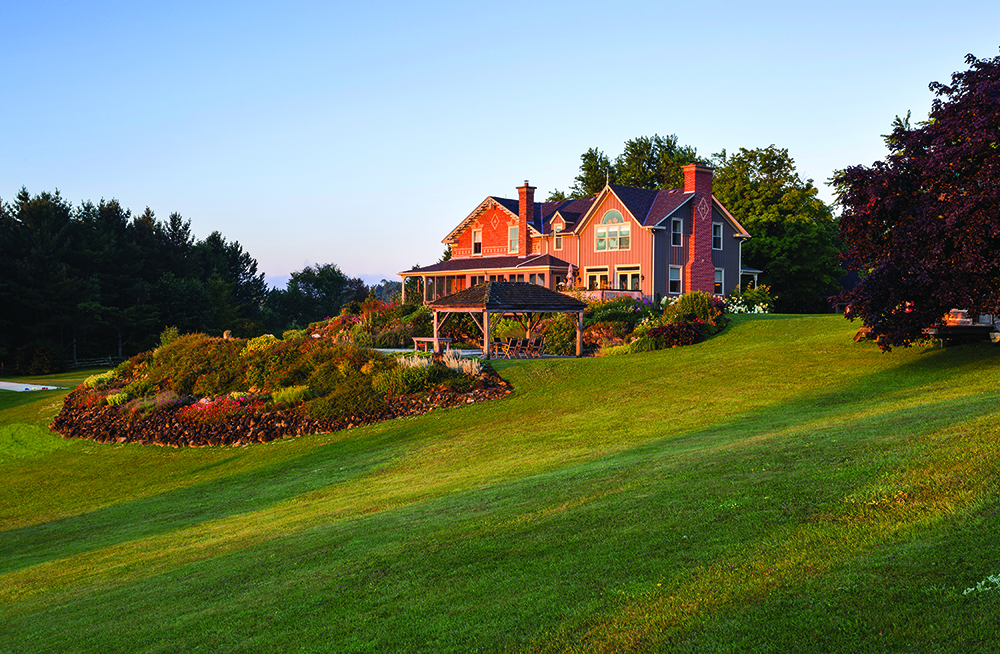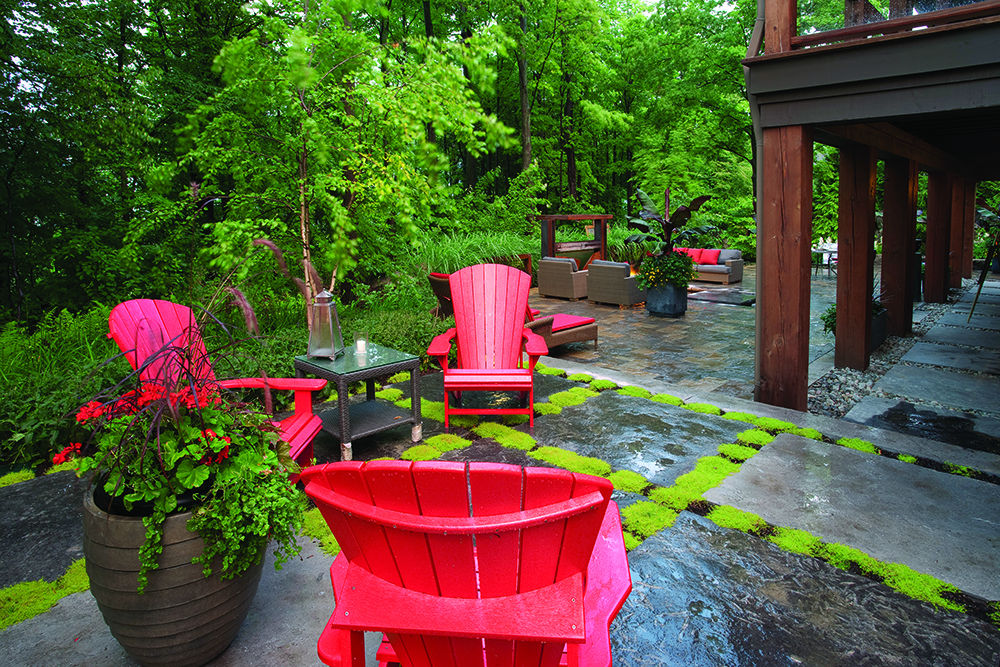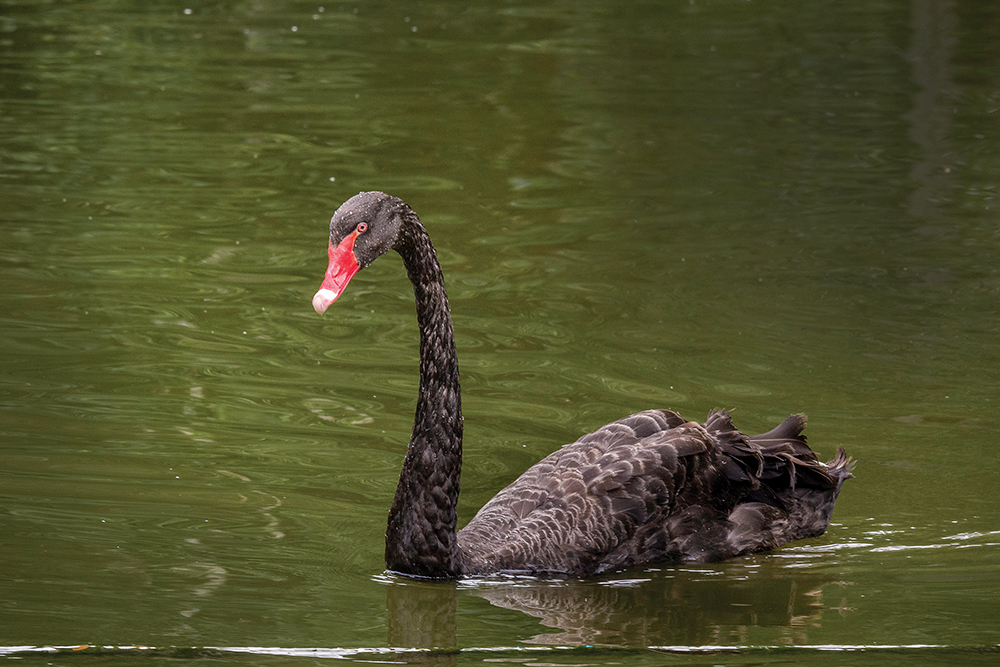Easy-care gardens flourish on a former cattle farm
![]() t never gets fertilized, sprayed with pesticide, or watered, yet the garden at Marilyn and Richard Young’s farm manages to thrive from early spring to late in the fall. Instead of chemical fertilizer, all the plants, shrubs and trees rely on regular composting – which Marilyn now has down to a science. And because there’s a limited water supply from the farm’s well, nature must provide all the moisture in the form of rain and dew, along with an occasional spritz from a hose in the evening. “I learned my lesson about how wells work one year when I ran the well dry watering some newly planted cedars,” says Marilyn, “so now I am very careful and have only drought-tolerant plants.”
t never gets fertilized, sprayed with pesticide, or watered, yet the garden at Marilyn and Richard Young’s farm manages to thrive from early spring to late in the fall. Instead of chemical fertilizer, all the plants, shrubs and trees rely on regular composting – which Marilyn now has down to a science. And because there’s a limited water supply from the farm’s well, nature must provide all the moisture in the form of rain and dew, along with an occasional spritz from a hose in the evening. “I learned my lesson about how wells work one year when I ran the well dry watering some newly planted cedars,” says Marilyn, “so now I am very careful and have only drought-tolerant plants.”
Before the Youngs bought the farm 15 years ago they had been living in Victoria, B.C., where the benign climate is a gardener’s delight. They soon discovered that gardening on the Niagara Escarpment in Ontario presents a lot more challenges. The property, a former cattle farm, already had an established garden planted by former owners but the soil had been depleted and things were overgrown. So they started with truckloads of new triple mix soil. Marilyn knew she wanted a “loosey-goosey” country look but she really didn’t know what would grow here, or even what zone this was, so she enlisted the help of local expert Connie Key, who called herself “The Flower Petaler” and did garden consultations.
“I remember that the first issue was the amount of shade from all the maple trees on the property,” recalls Key, who has since retired but is still an enthusiastic gardener. “Marilyn wanted colour, which can be difficult without much sun.” The clay-based soil was revived with additional new soil, but a lot of invasive plants needed to be dug out. They were replaced with, among other things, masses of daylily bulbs. “Daylilies can take a lack of sun, they come in a multitude of colours, they’re hardy, and they multiply like daffodils,” says Key. “Also, they’re not toxic; you can eat any part of a daylily.”
In order to welcome nature to the garden the Youngs chose plants that attract birds, bees and butterflies. Plenty of monarchs stop here on their migration, particularly to feed on the nectar of butterfly bush and purple coneflower – and on the burdock that grows on the banks at the back of the property. Hummingbirds come to dip their beaks into tubular plants like foxglove. And the berry bushes planted for the birds don’t get cut back in the fall till the birds have had their feed.
Although Marilyn gets help with her garden she is more than willing to get her hands dirty. Like so many gardeners, she is self effacing, claiming that she isn’t a ‘real gardener’ – she just loves it. But only real gardeners bother to keep every living thing from going to waste. Marilyn buys primulas over the winter and then replants them in the perennial borders in the spring. She saves tulip, crocus and daffodil pots that she brings into the house for colour in winter, cuts them back, lets them dry (somewhere out of sight) and then “pops the bulbs into the earth at the first opportunity.”
At the front entrance to the house there’s a circular garden – which Marilyn calls the “welcome garden” – where all the lilies she and Connie planted there years ago have multiplied and flourished. There’s also a pond at the front of the house that is not only a soothing element of interest – it is alive with many different kinds of frogs. They bury themselves in the muddy bottom of the pond in winter and emerge in the spring. “On hot summer nights,” says Marilyn, “they make the most beautiful sounds.”
Neither the lawns nor the gardens get sprayed with any kind of pesticide. The Youngs have just learned to live with the weeds. Even dandelions, which, at one time, Marilyn removed by hand, are left alone and now actually enjoyed when the lawns are dotted with their yellow flowers. Always conscious of the fact that this is a farm, they allow nature to prevail. At one time they picked up all the apples that fell from the trees, but now those are left for the wild animals. On one recent Thanksgiving night they watched as two coyotes devoured the apples. They see deer, too, but somehow the deer don’t hang around long enough to demolish the cedar hedges and trees – “probably because we have dogs,” suggests Marilyn.
The Youngs’ favourite time in the garden is early June when the poppies come out. “I have a garden diary,” Marilyn explains, “and I record when the first poppy appears and what the weather is doing.” The peonies begin to bloom at that time too – a deep fuchsia variety that has been at the farm for decades and never been divided. She does divide other plants like the irises and the hostas. The garden now has about 20 different hosta varieties. “I didn’t like hostas originally,” confesses Marilyn, “but now I think they’re amazing. They’re all so different and they’re so easy. They’re supposed to be shade plants but some of mine are in full sun and they still do well.”
Everything, it seems, does well in this garden. With ancient maples overhead creating a lush canopy, a weathered barn as a backdrop and patches of sunlit lawn meandering amongst the perennial borders, it’s like an intimate retreat … as welcoming and joyous as the first signs of spring.![]()


















